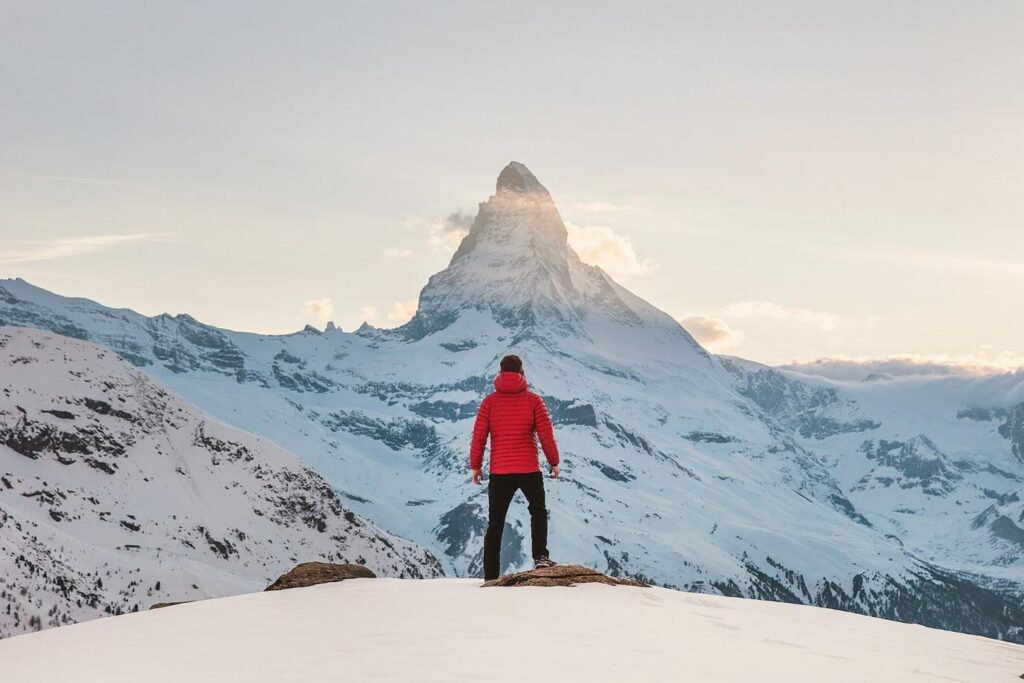Travel: that elusive little thing that somehow feels both urgent and timeless – it’s full of sand, wind, and aching feet, and yet it always starts slipping through our fingers the very moment we get back home. So, we do our best to capture it, taking photos and videos and curating our memories like archivists of our own lives. But here’s a thought: what if we could travel lighter, both physically and environmentally, even after we’ve returned from our trips? The environmental benefits of going digital with your travel memories might be greater than we imagine. Beyond simply saving space in our carry-ons, this shift could invite us to rethink our relationship with nature, technology, and ourselves. Let’s have a look!
Travel And The Environment
Something is comforting about nostalgia – the kind that makes us return to photo albums, whether real or pixelated and rummage through forgotten souvenirs. But while we’re indulging in remembering, the environment is there to bear the weight of the memories we try to preserve. The glossy photo prints, the physical albums, the heaps of touristy trinkets – all of that stuff. If not outright destructive, these relics from our trips abroad aren’t exactly what you’d call sustainable.
Green tourism – the rising trend of eco-conscious travel – is designed to counterbalance this, as highlighted by a study published by Research Gate, encouraging people to tread lightly. Nature stays undisturbed when you camp rather than build or walk instead of drive. The bottom line? Leave only footprints, not waste. But here’s the catch – or maybe the opportunity. What if we carried this eco-consciousness back home? What if, instead of clogging our shelves with plastic souvenirs from every corner of the globe, we embrace the digital way of remembering? Your memories, just like your footprint, can become lighter, too.
The Environmental Benefits Of Going Digital With Your Travel Memories
Photographs are more than just images; they are tangible souvenirs of our journeys, capturing the essence of places we’ve visited and the moments we cherish. Unlike keychains or postcards that might get lost or discarded, photos carry deep personal significance, evoking emotions and stories long after the trip. But printed photos, much like travel journals and postcards, are vulnerable to fading, damage, and clutter—especially for those who move frequently or prefer a minimalist lifestyle.
Beyond personal convenience, digitizing your travel photos is also an eco-friendly choice. Traditional prints require paper, chemicals, ink, and plastic coatings, all contributing to environmental waste through production, transportation, and eventual disposal. Multiply that by the hundreds or thousands of images taken during a single trip, and the impact becomes significant. Going digital with your travel memories has a considerably lighter footprint compared to the physical toll of print.

In addition, digitalizing services make it easier than ever to preserve these priceless travel memories sustainably. Specializing in photo and video digitization, Capture is a platform that helps travelers convert old prints, slides, and videotapes into high-quality digital files, ensuring that their experiences remain safe, accessible, and shareable for years. By storing these memories on a secure cloud or external drive, travelers can relive and share their adventures anytime—without worrying about deterioration or storage space. Plus, digital formats allow for creative storytelling through scrapbooking, editing, and video montages, offering an immersive way to celebrate past journeys without adding to landfill waste.
Travel Souvenirs: Uncluttered, Unboxed
We all love a good souvenir, right? But those cheap keychains, plastic magnets, and stuffed camels? They tend to pile up. And while your heart might swell with memories when you stumble across them, they’ll eventually wear out or break. Tossed into the trash, they’ll join the army of non-biodegradable items destined for centuries of landfill limbo. Instead, digital souvenirs offer an alternative. You can capture the experience and not just the object. Apps that record your itinerary, geo-tagged photos, or even a digitally designed memory box all represent lighter options. A curated digital gallery can say as much, if not more, than a dusty shelf full of old relics.
Postcards Without Paper: Social Media Is The New Postcard
Ah, postcards – those quintessential relics of travel that always seem to get mailed just a little too late. When they reach their destination, you’re already home and flipping through your own stack of newly printed photos.
Today, there’s a lighter alternative to postcards, as social media has taken their place. Your memories get sent out into the world instantly with a button click. It’s not the same or authentic as a handwritten note, but it’s a real-time connection to your audience and loved ones. It also saves trees, ink, and transportation. For all its criticisms, social media can be a powerful tool for travel memory curation. And who knows? Maybe your posts inspire others to tread a little lighter on their journeys.
The Paradox Of Memory And Experience
There’s something wonderfully ironic about using digital platforms to capture a trip where you’re supposed to unplug. But here’s where the balance comes in: using technology to preserve your memories without carrying their physical weight.

After all, if you’re hiking through a dense forest or wandering through the ancient ruins high in the Andes, would you rather carry a hefty camera and a collection of postcards or snap a quick shot with your phone? Digital tools allow you to focus on the experience while capturing its essence for later use.
This balance, between immersing yourself in the moment and recording it for posterity, is at the heart of modern travel. You don’t need to carry your memories physically. In fact, the best kind of souvenir might just be one you never print.
Conclusion
The environmental benefits of going digital with your travel memories may seem small at first glance, but they carry a massive effect. Every photo left unprinted, and every souvenir kept in the digital realm contributes to a larger, more sustainable future that is more welcoming to every living thing on Earth. That isn’t about sacrificing the joy of travel but rethinking how we carry it with us once the journey ends. In our shift to greener travel, our memories deserve to evolve, too. After all, what’s more valuable – the memory itself or how we preserve it? You already know the answer!
In this era of digital abundance, technology offers an easier way to hold onto the past and a lighter way to step into the future. You can keep your memories vivid, alive, and easily accessible without leaving a trace.


